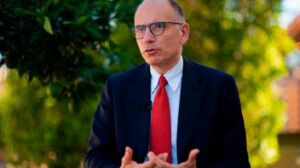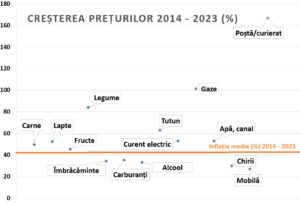 As one of the first speakers, His Excellency, Ambassador Cord Meier-Klodt of the Federal Republic of Germany, while recalling the city of Munich winning a price 10 years ago, indicated that the winning combination was with the following ingredients: infrastructure, low crime rate, the airport, October fest and other cultural events and their recognition at a national and international level along with household infrastructure. He highlighted that it was important to have cities made for people, where it should be pleasant to live in.
As one of the first speakers, His Excellency, Ambassador Cord Meier-Klodt of the Federal Republic of Germany, while recalling the city of Munich winning a price 10 years ago, indicated that the winning combination was with the following ingredients: infrastructure, low crime rate, the airport, October fest and other cultural events and their recognition at a national and international level along with household infrastructure. He highlighted that it was important to have cities made for people, where it should be pleasant to live in.
AHK’s (Chamber of Commerce and Industry Romania-Germany) “Cities of Tomorrow #6 – Reconversion & Revitalisation” conference, organized on Tuesday February 27th, was the opportunity to catch up and observe where we are currently standing here in Romania.
Introduction note from its President, Dr. Dragoș Anastasiu, brought both an acknowledgement of the event as a platform for the exchange of knowledge along with the commitment of Smart Cities programs to attract and bring back the Romanians living abroad.
The notion of “magnets” was mentioned by several speakers to design cities. Ambassador Cord Meier-Klodt considered those cities at a European level to project a very high standard elsewhere and act as “magnets”, i.e an example. According to him, Cluj-Napoca is in this regard a good example, considering its industry, its multiculturalism and its university. “Let’s learn from the best.”
Dr. Marcel Heroiu, Urban Development Specialist at the World Bank focused on the notion of “city-magnets”, précising first that we cannot have any sort of rural development without urban development. He later mentioned what the different attractive points for cities were: average wages, companies, number of students, investment per capita, as well as the distance from Bucharest, which appears according to research more important as a magnet than neighbor countries.
For example Continental Automotive Romania is a multinational which decided to position its headquarters in Timisoara. Its CEO, Dr. Cristian von Albrichsfeld, affirms right at the beginning of his speech the need the company has for skilled workers. Continental employs 6000 skilled workers in R&D and Engineering activities. They need a city which acts as a magnet to attract this workforce. For this, the city selected must have a great university platform and offer high level quality of life. Continental expects to increase their workforce by 1000 employees per year.
Yet while some cities in Romania seem to shine as magnets, Ambassador Cord Meier-Klodt does say that the gap between cities is growing. “This has to stop.” Infrastructure and education are the biggest priorities in his point of view. Tilman Buchholz – Deputy Director for the Urban Development Department at the German Federal Ministry of the Environment, Nature Conservation, Building and Nuclear Safety states on his side that an urban planning between central and local authorities must involve cities of all sizes.
General idea of how it is done in Germany is the cooperation between central and local authorities for sustainable urban development. National policies for urban development rely on 3 pillars: good practice, campaign for city and a communication platform for the exchange of information and expertise. The joint financing of a project is made equally by the federal government, the state and the local authorities (a third each). There needs to be a voluntary cooperation between the 3 layers. One of these incentives is in his opinion the positive externalities raised from public investments: “1 euro from the public sector triggers 8 euros from the private” research shows.
Ing. Hans-Jurgen Best, who’s a public administrator at Essen in Germany as well as a member of the Council for Urban Planification, gave a series of examples in the improvements made to the city over the last years. Urban changes come with a high social consideration. The accent is put on mobility and quality of life when considering a city’s regeneration. How to reinvent an old factory plant into a modern public space is subject to these considerations. Ioan Popa, mayor of Reșița, put as well an importance on the quality of life and the mobility while operating several changes throughout the capital of Caraș-Severin. Changes with the old industrial spaces have begun. In parallel, a use of European Funds was made for public transports (e.g. a new tramway network). In the point of view of the moderator, Hildegard Brandl, there needs to be a “source of pride” from the local community in the regeneration projects in order to secure its involvement and reduce the departure from inhabitants.
Tatian Diaconu, CEO at Immochan Romania, believes that it won’t be sustainable to just pour concrete to develop without making a connection with the local community and understanding its needs. He also indicates the need for urban planning capacity, which means being open to partnership, i.e. especially with the local authorities.
Arh. Eugen Pănescu, Partner at Fondator Planwerk, believes key ingredients are experience, trust and time. In his point of view, local authorities need private sector partners.
The experience of Tamina Lolev, Managing Partner at Nod Makerspace, specialized in creative co-working space renovations in Bucharest, is one of the involvement and support from both the local community and private businesses in order to make Nod’s story a success. They never received financial support from local authorities. Her project, which started in 2014, consisted in the renovation of a large building (Bucharest’s Cotton Factory), which today includes 1400 sqm of private studios, co-working space, catering facilities and even a library. In Tamina Lolev’s opinion, urban regeneration requires space, community contribution and business involvement.
The central panel concluded with an interesting Q&A session highlighting the real limits Romania is still facing in 2018 in the regards to city developments and regeneration: the lack of Public-Private Partnership legislation, freezing most initiatives, would be the first.
In second comes the lack of public funds supporting such initiatives. A large part of what would be required for such programs comes from European Structural Funds offered each year to each member-state. In Romania, we still have a large issue in the yearly distribution to projects at a national level. Finally, the increased gap between large cities and smaller towns seems to be wider by the year.









